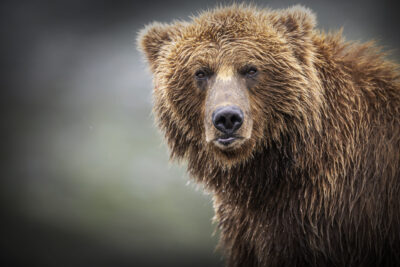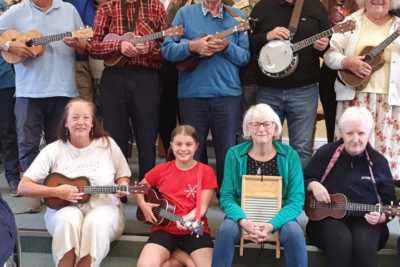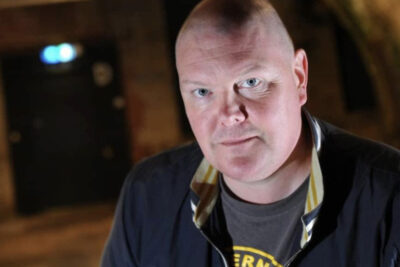
Keeping The Faith
by Sophia Smith
Thousands of Lancastrian and Yorkshire folk would once be found spinning, kicking and sliding on a talc-filled dancefloor to the power of the A- or B-side of an obscure soul 7-inch single. The dancefloors of northern England began thriving with a syncopated rhythm in the late 1960s when Wigan Casino blasted out killer tracks to masses revolting against the charts.

This phenomenon became known as Northern Soul which emerged from the mod scene in northern clubs such as Wigan Casino, The Torch in Stoke-on-Trent, Manchester’s Twisted Wheel, and Blackpool Mecca. Halls hosted the underground club nights in the late 60s and 70s with DJs introducing audiences to the rarest American vinyl. At its peak, the Wigan Casino membership topped a whopping 100,000, even though its capacity was only 1,200. Dancing might have been good for their souls, but not their worn-out brogue soles.
On a late evening in 1981, Italianborn and Liverpudlian photographer Francesco Mellina travelled to Wigan to capture the final Northern Soul all-nighter. “I was working as a freelance photographer for NME and they commissioned me to go there to illustrate an article documenting the final all-night session,” he said.
“It would start at midnight and people would finish dancing at eight o’clock in the morning. I decided to stay the whole night and photograph the entire event and I’m so glad I did. My photographs are now known as the best documentation of the Wigan Casino, and it’s not me saying that either!” Francesco laughed. “It’s the people who started the casino who have said it, such as Russ Winstanley, Richard Searling, the original DJs. It’s of huge historical importance for everyone.”
Francesco was born in 1952 in a small southern town called Polestina in Italy which he called ‘the toe’ of the country. At just age nine, he began to teach himself English, but the catalyst to learn the language was not a ‘fluent-in-three-months’ book, or a dictionary, but classic vinyl. “All of my records were American or English artists: The Rolling Stones, Jimi Hendrix, The Doors, Aretha Franklin. I was always really in love with the English language even though initially I didn’t understand a word of it.”
As a child he fell in love with the iconic music of the legendary Beatles. “I first saw them in a magazine article, the title said, ‘The Phenomenon of The Beatles’, I was engaged and bought the records and started learning about Liverpool and anything to do with the city. I was an anglophile, at the age of 16 I left home and travelled Europe before coming to Liverpool in… oh crikey,” he paused. “1974!”
“EVEN THOUGH I WAS PHOTOGRAPHING THE BAND, I WAS ENJOYING THE SHOW”
As Francesco chatted down the phone, his lifelong Italian accent prominent, a hint of a scouse twang had caught on… “In my case I have developed the scouse accent, I have retained my accent but it’s just fascinating it happens. My family are still in Italy, brothers, sisters, nephews, nieces, obviously not my parents, I haven’t been back for a few years because of the pandemic.”
When Francesco first arrived in the windy city, he resided in a house near Sefton Park and began to fall in love with the culture of Liverpool. “I tried to find places to visit, and somebody mentioned O’Connors Tavern. The famous Mersey poets did readings there every Thursday and I was captivated by it, my English wasn’t that good but it didn’t take me long to pick it up. I became good acquaintances with all of them especially the poet Roger McGough.”

Francesco enrolled in the Art College on a photography course whilst the musical explosion of Liverpool was beginning. “I loved music but I decided that I wasn’t a musician, I can’t play or sing. Cinematography was the best bet to get involved in the culture of the city. One of my biggest inspirations was Don McCullin, he was a photographer recognised for his war photography. When I was travelling in Europe, before I came to the city, I met a guy called Stefano who was working as a photographer, he introduced me to the camera.”
As he found places to capture, Francesco took a liking to the bar Eric’s on Mathew Street where he saw the likes of Pete Burns, Pete Wylie and Jane Casey. “They were always there, they all seemed to live there,” said Francesco. “It was the only point of reference for likeminded people. Eric’s was the catalyst for everything they went to achieve in the long ride. For anybody that had a particular way of looking at life it was the place to be. I include myself in that.”
Not long after meeting Pete Burns, Francesco became the manager of the iconic Dead or Alive. “Pete and I became friends because of my photography. He invited me to his flat to take photos of him and one day out of the blue he asked if I would manage him and of course I said no problem!” he grinned. Throughout his career, Francesco has captured many iconic artists including Paul Weller, The Clash, Japan, Talking Heads, Roxy Music, Kraftwerk, U2, Ramones and The Cramps. “Even though I was photographing the band, I was enjoying the show.
My favourite photo is the one I took of David Byrne of Talking Heads at Manchester’s Free Trade Hall in 1979. I wasn’t planning on even going to that gig, my friend was a fellow photographer, and he rang me and said he had a spare ticket to see them. I think I had about 16 shots left in the camera and I’m glad I went because it’s my favourite photograph. Maybe it was just destined to be.”
40 years since the final Northern Soul all-nighter, Francesco has released a book with photographs capturing and illustrating the end of the era called ‘Last Night at Wigan Casino.’ The book floods back memories for thousands of people who once kicked and danced along the ballroom floor. “The reason why the book came out this year is it marks the anniversary of the Casino closing.
The photos have featured on the BBC and I did an event in Blackpool recently with some of the prints on display and people would just walk past and recognise themselves on the photos. There were people from Birmingham, London, Stoke and a guy from Scotland who pointed out and said, ‘that’s me!’” Francesco laughed. “I just could not believe it! The book contains people dancing and sitting in groups, it’s brilliant for those people that were on the scene. Dozens of people have found themselves. It’s the beauty of history. And great for me, it’s a great body of work.”
“I had been to Wigan Casino twice before, but I didn’t stay very long because I had to get the last train back home so it was always rush and go. I do love soul music, even as a young boy back home in Italy I was buying Wilson Pickett records. But, I would be lying if I said I could dance like they did.” He chuckled. “The shot just comes natural to me. Each roll of film contained 36 frames, and shooting three rolls of film for someone like me or anybody was a lot. We didn’t have digital photography. You’d usually just take a few photos you thought the newspaper would need and then you were done.”

Casino: The
Photographs of
Francesco Mellina
£25 Waterstones
Last Night at Wigan Casino is Francesco’s second book – his first, Revealed, focuses on subcultures like punk and New Romantics. “I take photographs still, of musicians, commission work, but I don’t go to gigs unless it’s a friend of mine or someone I can get close up to. I saw most bands I loved in the 70s and 80s, I don’t need to see them anymore. I just go see unknown bands, at least you’re supporting something worthwhile.”
Most of Francesco’s work consists of using old archive which he licenses for books, films, record sleeves and selling the prints of his unique images that seize the atmosphere of the time, he just can’t ‘picture’ his life without his camera.




